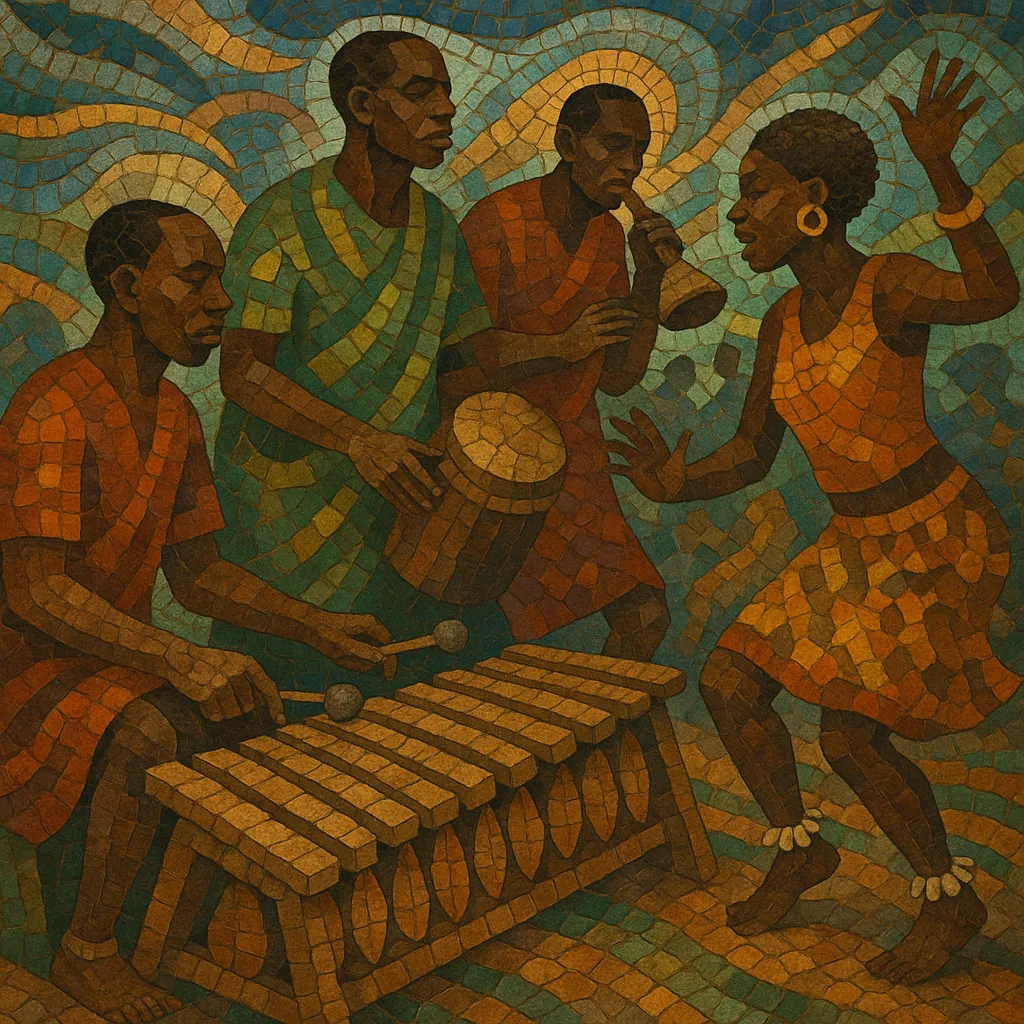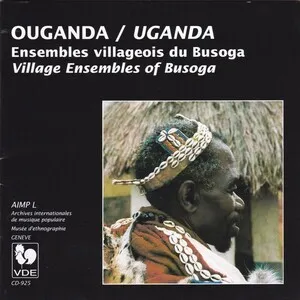Soga music refers to the traditional musical practices of the Soga (Basoga) people of eastern Uganda. It is characterized by interlocking xylophone (embaire) patterns, vibrant drum ensembles, call-and-response singing, and lively communal dancing.
A hallmark of the style is the large, low-pitched embaire xylophone, whose keys are laid over banana-stem resonators and played by several musicians in tightly interlocking, hocket-like parts. Performances often add ngoma drums, ankle shakers (ebinyege), endere flutes, and the one-string tube fiddle (endingidi), creating rich, polyrhythmic textures. Singing alternates between solo leaders and choral responses, and texts commonly address social life, praise, morality, and historical memory.
The music is communal, outdoor, and participatory, designed for ceremonies, harvest celebrations, weddings, and kingdom events. Its cyclical rhythmic design, pentatonic-to-heptatonic melodic shapes, and layered ostinatos give Soga music its propulsive, dance-forward energy.
Soga music predates the colonial era and developed as a community-based ceremonial and recreational practice within the Busoga Kingdom in eastern Uganda. Music and dance were integral to rites of passage, marriage ceremonies, harvest and fishing celebrations, and royal gatherings. Ensembles were typically made up of village members, with repertoire transmitted orally.
By the 19th century, the embaire xylophone had become a signature of Soga performance. Several players share one instrument, each performing interlocking ostinatos that create a dense, shimmering composite rhythm. Drums (ngoma) coordinate dancers and mark section changes; endere flutes, endingidi (one-string tube fiddle), and vocal leaders add melodic and poetic substance. The style emphasizes cyclical form, call-and-response, and polyrhythmic layering (often felt in 12/8 with cross-rhythms like 3:2 and 6:4).
In the early-to-mid 20th century, mission schools and urbanization altered performance contexts, but Soga music remained active in rural life and cultural clubs. After Ugandan independence (1962), regional cultural troupes helped preserve and showcase Busoga traditions nationally. In the 21st century, documentation by cultural institutions, folkloric troupes, and festival platforms broadened visibility, and collaborations with contemporary artists highlighted the embaire’s interlocking logic alongside modern percussion and amplification.
Today, Soga music is sustained by village ensembles, school and district troupes, and Busoga Kingdom events. While core aesthetics—interlocking xylophone parts, communal singing, and dance—remain intact, some groups integrate microphones, stage formats, and cross-genre collaborations to reach new audiences while maintaining local social functions.




